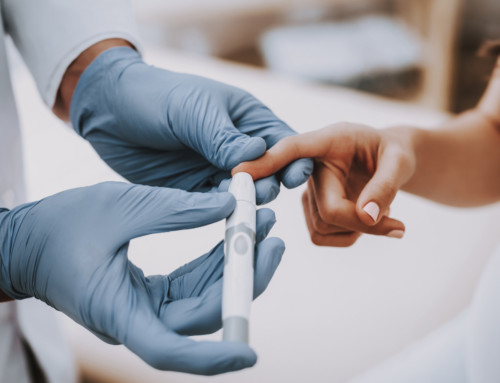In the United States, the American Cancer Society (ACS) estimates that approximately 14,100 new cases of invasive cervical cancer will be diagnosed, and about 4,280 women will die from cervical cancer in 2022. Cervical cancer starts in the cells lining the cervix, which is the opening to a woman’s uterus, located at the top of her vagina. Although once considered a common cause of death in women, the incidence of cervical cancer has significantly decreased over the decades with the use of the Pap smear.
 Dr. George Nicholas Papanicolaou, a pioneer in cytopathology (the study of cells to determine a diagnosis), is credited with creating the “Pap” smear after co-authoring a landmark book in 1943, Diagnosis of Uterine Cancer by the Vaginal Smear, with Dr. Herbert Traut, a gynecological pathologist. Since then, the Pap smear has revolutionized the early detection of cervical cancer.
Dr. George Nicholas Papanicolaou, a pioneer in cytopathology (the study of cells to determine a diagnosis), is credited with creating the “Pap” smear after co-authoring a landmark book in 1943, Diagnosis of Uterine Cancer by the Vaginal Smear, with Dr. Herbert Traut, a gynecological pathologist. Since then, the Pap smear has revolutionized the early detection of cervical cancer.
A Pap smear is a screening test used to collect cells from the cervix that are smeared on a glass slide so that they can be observed under a microscope in a lab to find changes that might be pre-cancerous or cancer. This procedure may also identify infections or inflammation and is usually performed as part of a woman’s annual pelvic exam by her gynecologist or primary care doctor. Some women describe the experience as “a light scratch or pinch,” while others may feel nothing at all.
“Beginning at age 21, women should start to have a Pap smear about every three years until they are 30 years of age,” said Kari Lynn Purcott, MD, a board-certified obstetrician/gynecologist at Pacific View OB/GYN, Tri-City Medical Center’s newest OB/GYN clinic. “Until they reach 65 or have had a total hysterectomy, women have three choices to screen for cervical cancer. They can continue doing just the Pap smear, or they can do a Pap smear and an HPV test (co-testing) every five years or just an HPV test every five years. An HPV test looks for cervical infection from HPV rather than abnormal cervical cells.”
HPV – human papillomavirus – is a common sexually transmitted infection; most of the time, the infection goes away on its own, but it can lead to cervical cancer. The Centers for Disease Control and Prevention (CDC) report that more than 42 million Americans, men and women, are currently infected with HPV types that cause disease and about 13 million Americans, including teens, become infected each year. The best way to prevent against most cancers caused by HPV is for boys and girls to get two doses of the HPV vaccination at ages 11 and 12 years before they are exposed to the virus.
“Women who did not receive the vaccination as a child can still get immunized up to age 26, and even to age 45 after discussing it with their doctor,” said Dr. Purcott. “The three-shot series is done over a six-month period and is still beneficial in protecting against cervical cancer, even though there is an increased likelihood that the patient has already been exposed.”
 According to the American College of Obstetrics and Gynecology (ACOG), if the HPV infection persists for one or two years and involves “high-risk types” that can cause more severe or “high-grade” changes in cervical cells, then it is more likely to become cancer within three to seven years, if not treated. Since HPV is often without symptoms, it is important that women get screened on a regular basis to detect these cellular changes before they become cancer. In addition to HPV, ACS lists the following as some of the risk factors for cervical cancer: sexual history, smoking, a weakened immune system, long-term use of birth control pills, multiple full-term pregnancies, the use of a hormonal drug Diethylstilbestrol (DES) for miscarriage and family history.
According to the American College of Obstetrics and Gynecology (ACOG), if the HPV infection persists for one or two years and involves “high-risk types” that can cause more severe or “high-grade” changes in cervical cells, then it is more likely to become cancer within three to seven years, if not treated. Since HPV is often without symptoms, it is important that women get screened on a regular basis to detect these cellular changes before they become cancer. In addition to HPV, ACS lists the following as some of the risk factors for cervical cancer: sexual history, smoking, a weakened immune system, long-term use of birth control pills, multiple full-term pregnancies, the use of a hormonal drug Diethylstilbestrol (DES) for miscarriage and family history.
“Lately, there has been some discussion within the medical community about eliminating Pap smears and just determining if a patient is positive for HPV,” added Dr. Purcott. “However, that is currently not the standard of care. In our office, like most physicians, we use the ThinPrep Pap test for BOTH Pap and HPV testing.”
During a ThinPrep Pap test, cell samples are collected with a special brush that is inserted into a vial containing a preserving solution. The vile is sent to the lab where its content is filtered and then spread onto a slide by an automated processor, providing a more accurate sample that is read by pathologists. Clinical trials have shown that the ThinPrep Pap test is more effective than a traditional Pap smear in detecting cervical cancer or precancerous cells.
“If results are negative for HPV or show normal cervical cells, then patients can wait five years before having another test, which is great news,” said Dr. Purcott. “As the testing reliability for HPV continues to improve, the ACOG guidelines continue to be updated , so we may not need to do a Pap smear in the future. I recommend that patients talk with their doctors to determine what is best for them based on their age and risk factors.
To schedule an appointment for a well-woman annual exam, please call 760-476-2929, or visit Pacific View OB/GYN.
“To schedule an appointment for a well-woman annual exam, please call 855-222-TCMC (8262) or visit Tri-City Primary Care.”






